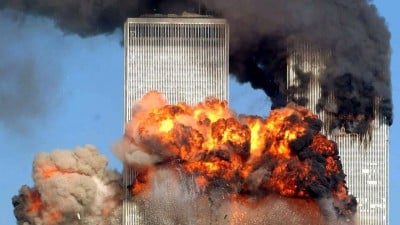

| Online: | |
| Visits: | |
| Stories: |

| Story Views | |
| Now: | |
| Last Hour: | |
| Last 24 Hours: | |
| Total: | |
5 Revelations From the 9/11 Joint Inquiry’s 28 Pages

By Kevin Ryan / GlobalResearch.ca
The missing 28 pages from the U.S. Congressional Joint Inquiry into intelligence activities related to 911 were finally released to the public. These pages do not reveal a lot of new information but what is new strengthens lines of investigation that need to be followed-up. Here are five examples.
1. The 28 pages say a lot about two men—Omar al-Bayoumi and Osama Bassnan. The pages hint at the idea that Al-Bayoumi and Bassnan, who sponsored some of the alleged hijackers in the U.S., were Saudi intelligence agents or assets. Although this is not new, the pages also mention that both of them worked closely with the Saudi Arabian Cultural Mission (SACM). That should bring investigators back to the WTC security company Stratesec, which held its annual meetings in SACM offices.
2. The SACM was part of the Saudi Embassy run by then-ambassador Prince Bandar. The released pages do a lot of hinting about Bandar’s funding of Al-Bayoumi and Bassnan’s activities in the United States. What is perhaps a revelation is that the men’s wives received money from Bandar’s wife but also that Bassnan received $15,000 directly from Bandar’s account.
3. The pages also reveal that, “several Saudi Naval officers were in contact with the September 11th hijackers.” A related fact that needs more scrutiny is that Science Applications International Corporation (SAIC), which profited greatly from the 9/11 crimes, had spent over twenty years building and training the Saudi Navy. At the time of 9/11, SAIC was run by Dick Cheney’s protégé Duane Andrews, who was the most knowledgeable person regarding the vulnerabilities of the information and communications networks that failed that day.
4. The released pages also make a lot of insinuations about Abu Zubaydah’s “phonebook.” Zubaydah was the alleged al Qaeda leader captured just a few months after the Inquiry’s report was released. The 28 pages repeatedly mention that his phonebook had several numbers that could be “linked” to U.S. phone numbers. Readers will likely fail to realize that in 2009 the U.S. government retracted its claims that Zubaydah had any association to al Qaeda. That the 9/11 Commission Report depended heavily on Zubaydah’s torture testimony is a fact that was quickly forgotten by Commission and intelligence agency leaders.
5. The Inquiry’s report was built largely on information provided by the FBI and the CIA. The 28 pages show this clearly. What people might fail to question is why the Inquiry would go about investigating intelligence agencies simply by reporting information provided by those agencies. That contradiction was amplified when the Inquiry’s leaders allowed the FBI to intimidate their own panel members by investigating them while they were investigating the FBI. The reasons for these contradictions are probably related to the fact that leaders of the FBI and the CIA are legitimate suspects in the 9/11 crimes.
In the end, the release of the 28 pages reinforces some information that was already available but does nothing to correct the propaganda that the Joint Inquiry produced. The public can learn from it, of course, but that requires looking beyond the propaganda.
www.globalresearch.ca contains copyrighted material the use of which has not always been specifically authorized by the copyright owner. We are making such material available to our readers under the provisions of “fair use” in an effort to advance a better understanding of political, economic and social issues. The material on this site is distributed without profit to those who have expressed a prior interest in receiving it for research and educational purposes. If you wish to use copyrighted material for purposes other than “fair use” you must request permission from the copyright owner.
For media inquiries: [email protected]




You only need to google Prince Bandar and Bush, to see who Prince Bandar’s partner in crime was on 9/11.
Should be very clear now, to everyone, that this is way more than just treason…